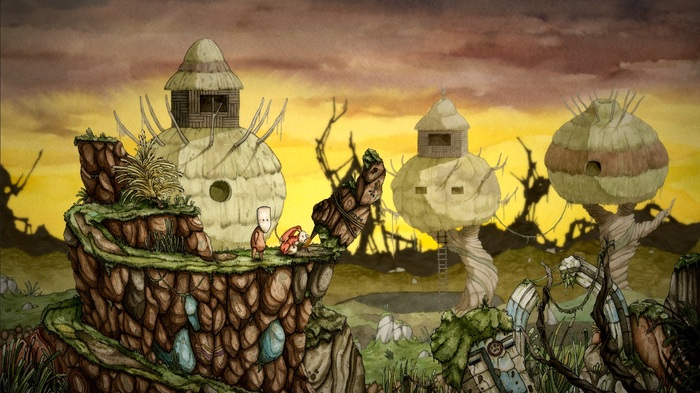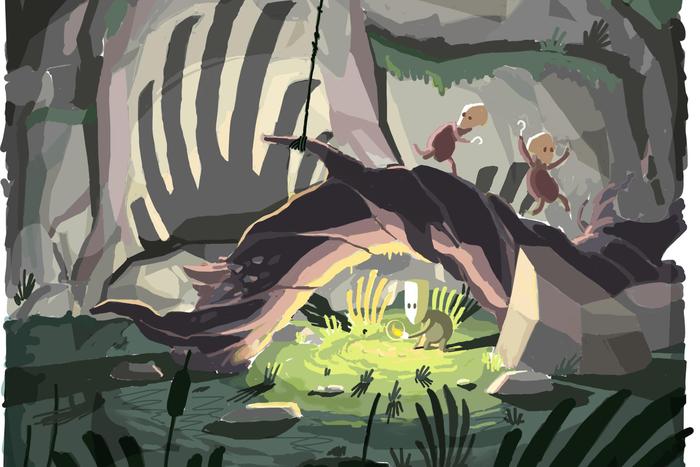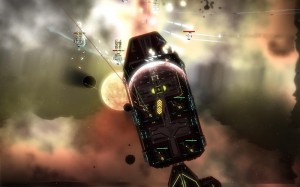It has been said that, “everything old is new again,” and that seems to be exactly the case with the successful Kickstarter campaign of indie game Candle. Why old? Because Candle utilizes traditional crafting of watercolor artistry, the hand-drawn, frame by frame character movement (old Disney design) without software generated technology or (HUD). Candle‘s uniqueness also lies in the “light” that is carefully manipulated throughout the game, a touch that adds depth, mystery and movement in the journey.
Candle is a canvass as such and allows the player to immerse themselves into each scene and identify through the art, the “puzzle” of Candle-a game that while on the surface may seem adolescent but in reality has very adult situations and themes and requires careful attention to detail.
It has also been said that “anything worth having is worth working for” and even though the Candle release date has been set back a full nine months (so far) the backers of this game aren’t complaining because in the end they want it to be everything they have imagined and then some. In fact, one of the most appealing aspects of Candle‘s creation is the support and the involvement of gamers to the extent that a contest had been implemented where interested backers could submit a character creation of their own for possible production.
We sat down with Miguel Vallés, Programmer and Jose A. Gutiérrez, Art Director the creators of Candle and asked them to elaborate a bit on the birth of their “baby,” the reasoning behind keeping it independent and self-funded in spite of some monumental obstacles to entrepreneurship in their native country.

Jesse Tannous: What kind of world did you want to create with the art direction of Candle? What was the intended emotional reaction for this world?
Miguel Vallés: Well, Jose -the Art Director- comes from a very classic art formation, and he always wanted to somehow bring traditional art to videogames, to create a ‘living painting’ but using actual physical hand-painted graphics (not like, you know, making everything in Photoshop and claiming it’s “hand-made”). That was our main goal for the art direction of the game. We wanted the player to really feel like a part of that massive painting, and by that we are trying to encourage everyone to pay close attention to what’s going on in the game.
We have completely removed the HUD from the game, so that the only thing that’s being shown in the screen is the game itself. This way, we can have a lot of clues and puzzles hidden in plain sight, forcing the player to really get immersed by the art, because it is not just a gimmick, it’s a core feature of the game’s mechanics: if you do not pay attention to the screen, you will most likely get stuck in the game.
JT: You call this game an “adult-tale,” can you elaborate a little more on what you mean by that? What sorts of themes does this game explore that will resonate with a more adult audience?
Jose Gutiérrez: We are building Candle‘s narrative from a very interesting perspective. The story is told through the narrator (Teku’s tribe shaman) and cinematics, and the lines are written like a childbook. It is a very deep story about life, religion, culture and humanity, but told with a very simple and “childish” appeal, like a classic fable. However, despite its naïve feeling it has a lot of subtle ideas and hidden meanings that directly appeal to a mature audience.
JT: What was the original catalyst to this project?
MV: Jose and I met at the University, and we soon realized that we really wanted to make games somehow. He was studying an Arts Degree and I was studying Software Engineering, so we could say that we were a perfect match. As soon as we had enough experience with our respective disciplines, we started prototyping a game that, one day, became Candle.
JG: Yes, I remember taking a shower -true story!- and suddenly the idea of a character carrying a Candle came to my mind, I told that to Mike and we instantly knew that it had lots of potential, so we started the main brainstorming process for what eventually became Candle.

JT: How has development been going since the successful Kickstarter?
MV: Well, Kickstarter saved our asses! We are 5 people now at the studio, and another 5 working with us sporadically, so we really needed to get funding for this project. Fortunately, Kickstarter provided us with enough money to work (even with our current 9-month delay for the release date). The development is progressing well, although the watercolours are slower to produce than we expected, so this will take longer to be finished. Fortunatelly our backers understood the situation and aren’t rushing us to finish Candle.
JT: What circumstances led you to pursuing the life of an indie video game developer? What have been some of the biggest challenges/rewards of that journey?
MV: We knew we wanted to make games, and we were determined to achieve that goal no matter the circumstances. Fortunatelly, people really liked Candle and the Kickstarter campaign went very weel, so we can´t complain at all.
However, entrepreneurship in Spain is hard because here the situation is quite bad. It’s hard to fund your projects and it’s even harder to sustain them, since the Government is suffocating the small studios with abusive taxing. But we will carry on.
JG: The most rewarding thing of this journey is the community that was created around the Kickstarter project. We are currently running a contest for our backers (allowing them to design one character for the game), and the amount of passion they have for our game is insane. That’s amazing.
While Candle, is still in development and promises to take the gamer on an extraordinary journey through an artistic realm that mixes fable, fairy tale and imagination, it could also be the case that the story its development could do the same for other indie developers in the world with their own societal obstacles.
Jesse is a journalist first who just happens to love video games and enjoys writing video game related articles and interviewing industry professionals.



